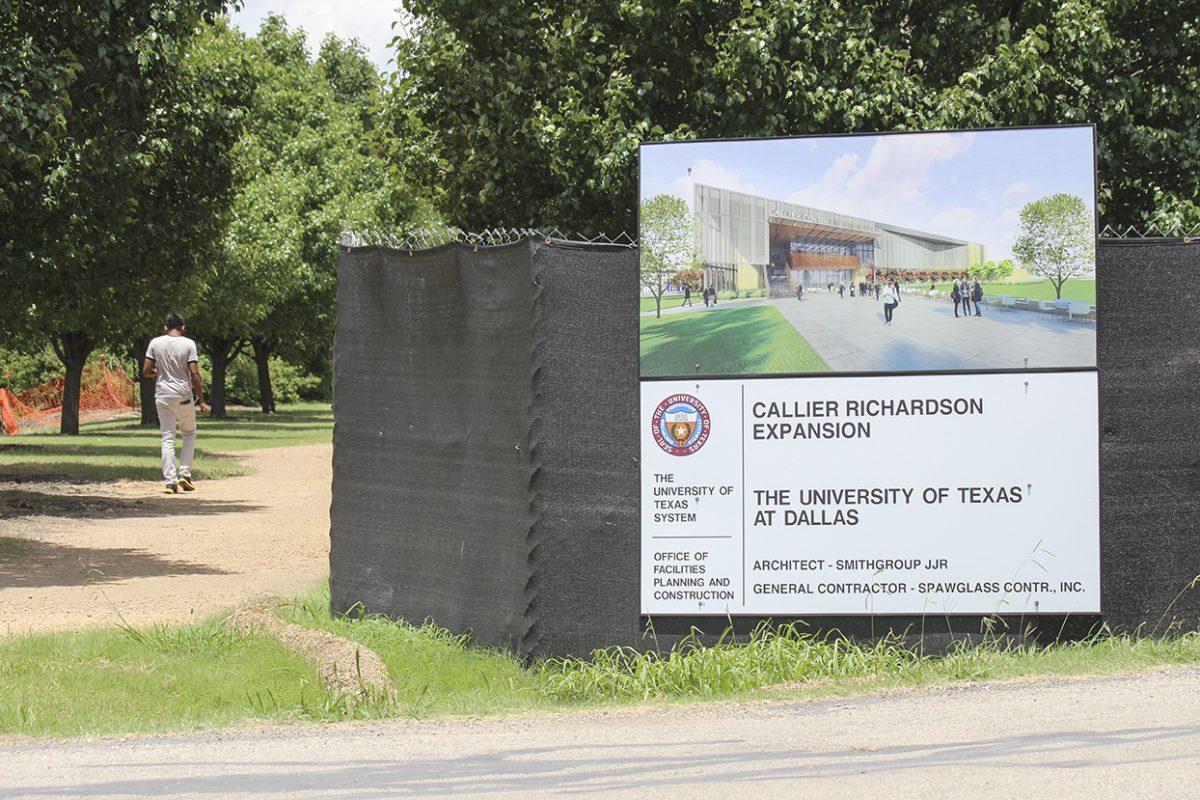Research capacity will expand with new 50,000 square foot builiding
Since beginning construction in April of this year, the Callier Center for Communication Disorders has been undergoing significant expansion and is projected to triple clinical, research, and academic space for students and faculty by fall of 2016.
The construction project will focus on general repurposing of the original 20,000 square foot building by maximizing available floor space for research equipment and testing.
“Our vision is to be the premier research, student training program in the country,” said Bert Moore, dean of behavioral and brain sciences.
Additionally, a 50,000 square foot extension will be constructed in order to expand research capacity, therapy services, faculty offices and classrooms. In terms of layout, the new facility will be compartmentalized to cater to the Callier Center’s various functions.
“It will be a new academic home, particularly for the speech-language pathology students who have not had a place to go,” Moore said.
The expansion will also include a lounge for students as well as a courtyard.
While most of the undergraduate speech pathology classes are currently held on the Richardson campus, currently some students still need to commute to the downtown Dallas Callier Center in order to attend class during an off semester.
“What the expansion will now allow us to do is have more opportunities for observation classes for our undergraduates,” said Thomas Campbell, executive director for the Callier Center.
The expansion is expected to grow training capacity by 80 percent for speech-language pathology and audiology students.
With the growing number of faculty members who specialize in speech-language pathology and audiology, the university has had difficulty providing assignable research and office space for incoming researchers and professors.
Campbell said the new space will help to meet the needs of those students, staff and faculty members in need of workspaces.
“There will definitely be new offices associated with laboratories for people who have funded research activities,” Campbell said.
While the Richardson campus will undergo significant development, it will not take away from the Dallas Callier Center, Campbell said.
“If anything, the two complement each other,” he explained. “It’s not a matter of closing down one and ramping up the other. For a program our size, with the number of patients that we see and the number of students that we have to train, we need to have both locations.”
In addition to providing more academic and research space for communication sciences faculty and students, the new building will provide two separate lecture halls open to undergraduates across all disciplines within the School of Behavioral and Brain Sciences.
“We will be able to foster integration not just within the school, but between schools. And with researchers who are doing work in communication sciences, as well as related fields like bioengineering, cognitive science, and neuroscience related to communication,” Moore said.
Additionally, other arms of the university will be affected by the expansion and will be relocating to Callier from different areas on campus. Campbell said crossover with departments such as the Center for Children and Families, an organization that focuses on child development services, will be easier once under the same facility
On the community level, clinical demand for populations with communication disorders is expected to grow 30 percent within the next two years. Undergraduate student enrollment is also expected to rise 30 percent within the next five years.
Since its inception in 1963, the Callier Center has grown to be one of the largest and highest ranking programs for communication sciences and disorders in the country. The U.S. News Report currently ranks UTD’s audiology program third in the nation, while the speech-language pathology program is ranked eleventh.
“We think we have the resources, both in terms of facilities and faculty and students, and we really want to accomplish (and) be the best place there is,” Moore said.











